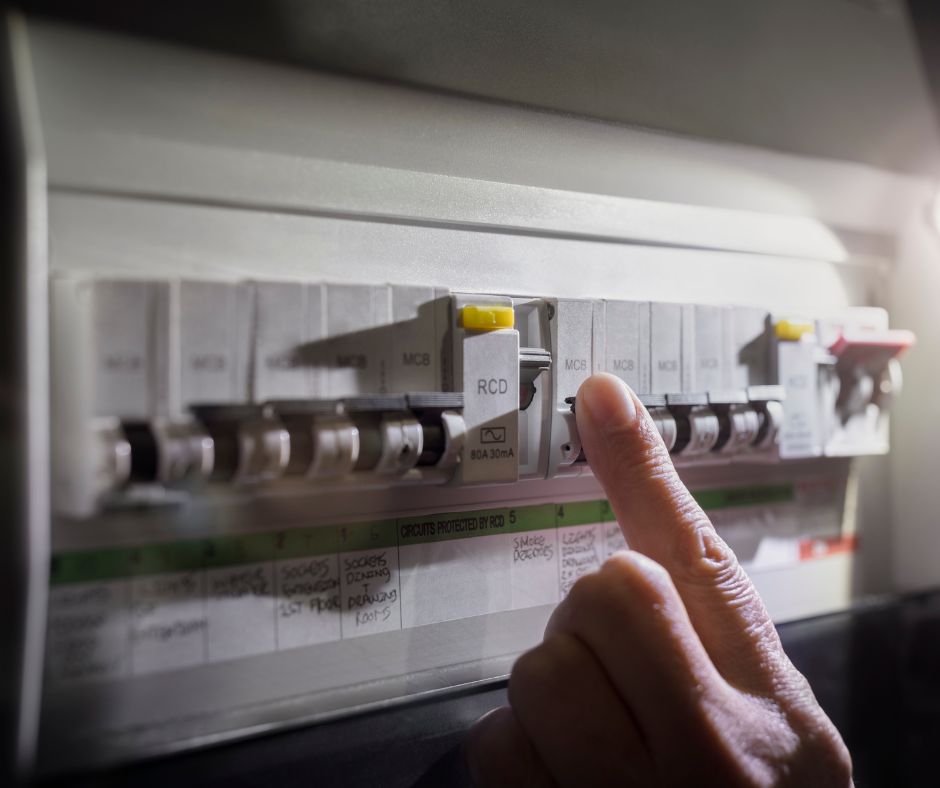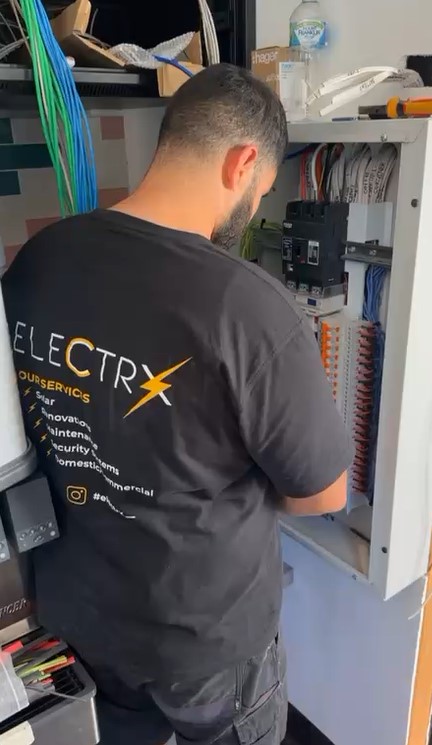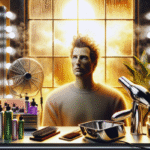Discover the Frequent Causes Behind Circuit Breaker Tripping in Your Home
When a circuit breaker experiences frequent tripping, it serves a crucial function in safeguarding your home from potentially dangerous electrical faults. This recurring issue can stem from various common factors, including overloaded circuits, short circuits, malfunctioning appliances, or concealed wiring issues. If you observe that the breaker trips consistently, it is essential to pinpoint the underlying fault and consult a licensed electrician to perform the necessary repairs, thereby ensuring that your home’s safety and operational efficiency are promptly restored.

Step-by-Step Guide to Diagnose the Root Causes of Your Circuit Breaker Tripping
If your circuit breaker consistently switches off immediately after being reset, it indicates a significant issue within your electrical system. The breaker is fulfilling its protective role by cutting off power to avert potential hazards or more severe complications. Addressing these issues promptly is crucial to maintaining the integrity and safety of your electrical system, thereby preventing further complications that could endanger your home.
We frequently receive concerns from homeowners in Werribee, Altona, and Point Cook regarding this troubling issue. While it can be quite inconvenient, persistent tripping often serves as an early warning sign of more severe electrical problems that could escalate if neglected and not addressed adequately.
This article aims to delve into the different underlying causes of circuit breaker problems, provide practical troubleshooting steps you can undertake, and illustrate how Electrx can effectively tackle these electrical challenges.
Comprehending the Mechanism of Circuit Breakers in Protecting Your Home
Circuit breakers operate as automatic safety devices specifically designed to protect your home by interrupting electrical power under certain conditions, which include:
- When excessive current flows through a circuit, resulting in an overload situation that can cause damage.
- In instances of short circuits that could lead to hazardous electrical faults and fires.
- When there is power leakage to the ground, indicating a potential earth fault that must be addressed.
- If the breaker itself is faulty or nearing the end of its operational lifespan, necessitating replacement.
Unlike traditional fuses, circuit breakers respond more swiftly to potential threats, offering a more advanced safety mechanism that does not depend on melting wires to halt the current flow. This rapid response ensures a significantly safer environment for your family and property.
Investigating Why Your Circuit Breaker Refuses to Stay Reset
If you find yourself resetting the breaker only for it to trip again almost immediately, this indicates that there is an ongoing fault present within that specific circuit. Understanding the common causes can significantly aid you in diagnosing the issue effectively.
The primary issues that frequently contribute to this situation include:
Recognising Overloaded Circuits: A Common Electrical Challenge
Overloaded circuits present a prevalent electrical concern, especially when multiple high-draw devices such as kettles, toasters, or heaters are used simultaneously on the same circuit. The combined load can easily surpass the safe capacity, prompting the circuit breaker to trip as a protective measure against overheating and potential fire hazards, which could jeopardise your home and its occupants.
Assessing If Defective Appliances Are Contributing to the Circuit Breaker Tripping
In certain cases, the root of the problem may reside within the appliances connected to the circuit rather than the wiring itself. Devices such as heaters, older refrigerators, and dryers often prove to be frequent offenders; internal faults in these appliances can lead to short circuits or current leakage, causing the breaker to trip without warning.
Understanding the Dangers Associated with Short Circuits and Their Causes
Short circuits occur when damaged wiring, rodent infestations, or crushed insulation allow live wires to touch the earth or neutral wires directly. This hazardous condition can trigger the circuit breaker to trip rapidly, preventing dangerous outcomes that could threaten your property and the safety of its inhabitants.
The Significance of Recognising Earth Leakage and Its Potential Effects
Moisture infiltration in outdoor outlets, garden lighting setups, or under-house cabling can create conditions conducive to current leakage into the ground. This scenario can cause Residual Current Devices (RCDs) to trip as a precautionary measure, ensuring the safety of your electrical system and preventing potentially dangerous situations from arising.

Essential Proactive Measures to Take When Your Circuit Breaker Trips
- Unplug all devices connected to the outlets on the affected circuit to eliminate any potential source of overload that could be causing the issue.
- Reset the circuit breaker by flipping it back to the ‘on' position and observing its behaviour.
- If the breaker remains active, begin reconnecting your devices one at a time to identify the source of the problem.
- When the breaker trips again, you will have successfully pinpointed the faulty device that requires further inspection or replacement.
- If the breaker continues to trip even with no devices connected, it is advisable to contact our team for professional assistance.
Take advantage of our Fault Finding Service to receive a thorough and prompt diagnosis of your electrical issues, thus ensuring your safety and peace of mind in your home.
Recognising When to Cease Resetting Your Circuit Breaker
If your circuit breaker frequently trips or refuses to reset altogether, it is imperative to take the following precautions:
- Do not keep resetting the breaker—this action can place excessive stress on the entire electrical system, potentially leading to further complications.
- Avoid swapping breakers between different circuits, as this practice may exacerbate the existing issues.
- Do not attempt to replace the breaker yourself—this is not only against the law but also poses significant safety risks to you and your property.
We have encountered numerous instances where DIY resets have resulted in damaged boards or even house fires. Trust our experienced professionals to safely and effectively trace the underlying issue and provide a reliable solution.
What to Expect When Electrx Addresses Your Circuit Breaker Concerns
When our dedicated team at Electrx responds to a reported circuit breaker fault, we conduct a comprehensive assessment that encompasses:
- Testing the circuit with specialized clamp meters and insulation testers to ensure safety and reliability throughout the system.
- Inspecting all outlets, fittings, and switchboard connections for any signs of irregularities or wear that could signal potential issues.
- Examining appliances that may be contributing to the fault for internal issues that could cause malfunction.
- Replacing the circuit breaker or RCD if we determine it has failed during our thorough assessment.
- Repairing any damaged cabling or terminals that pose a safety risk to your overall electrical system.
- Issuing a Certificate of Electrical Safety upon the successful completion of our work, ensuring compliance with safety standards and regulations.
If your switchboard is outdated or lacks sufficient safety switches, we may also recommend a Switchboard Upgrade to enhance safety standards and effectively protect your home from electrical hazards.
Understanding the Lifespan of Circuit Breakers and Recognising Signs of Failure
Indeed, circuit breakers, like any mechanical device, possess a finite lifespan. If your breaker is tripping excessively or does not reset smoothly, it may indicate a fault that requires immediate attention from a professional.
Signs that your circuit breaker may be nearing failure include:
- Feeling hot or loose to the touch, indicating potential overheating that could compromise safety.
- Tripping without any apparent cause, suggesting underlying issues that need to be addressed.
- Requiring significant effort to reset, which is a clear sign of malfunction.
- Flipping even when there is no load connected, indicating possible internal faults that could lead to further complications.
We maintain a selection of modern, compliant replacements readily available and can promptly replace faulty breakers to ensure the safety and reliability of your electrical system, providing you with peace of mind.

Your Questions Answered: Comprehensive Circuit Breaker FAQ
Can I legally replace my circuit breaker myself?
No, according to Victorian law, only a licensed electrician is authorised to safely and legally replace circuit breakers in residential settings, ensuring compliance with safety regulations.
Why does my circuit breaker trip when I operate the heater?
Heaters typically draw a significant amount of current. If they are sharing a circuit with other high-power devices, this can lead to an overload situation, causing the breaker to trip as a protective measure to prevent overheating.
Can a faulty outlet cause my circuit breaker to trip?
Yes, damaged or melted outlets can short internally, leading to the breaker tripping each time the circuit is energised, which can create hazardous conditions that pose risks to your safety.
Is this a situation that requires immediate attention?
Absolutely, especially if the breaker fails to reset, affects critical appliances, or shows signs of burning or overheating that could pose serious risks to your property and safety.
Final Insights into Circuit Breaker Problems and Their Effective Solutions
When circuit breakers trip, it is essential to understand that they do so for specific reasons. If your breaker fails to stay reset, it is vital not to ignore this warning, as the underlying issue could reside within your wiring, appliances, or the switchboard. Electrx is well-equipped to identify and resolve these concerns swiftly and effectively.
We will manage all necessary repairs to ensure your system operates safely and reliably, maintaining its dependable performance for your peace of mind.
Reach out to us for expert assistance with Melbourne Switchboards and your electrical needs, ensuring your home remains safe and functional.
Circuit Breaker Keeps Tripping or Won’t Stay Up? Here’s What It Means
The Article: Circuit Breaker Tripping? Discover What It Means first appeared on https://writebuff.com
The Article Circuit Breaker Tripping Explained: What You Need to Know Was Found On https://limitsofstrategy.com


